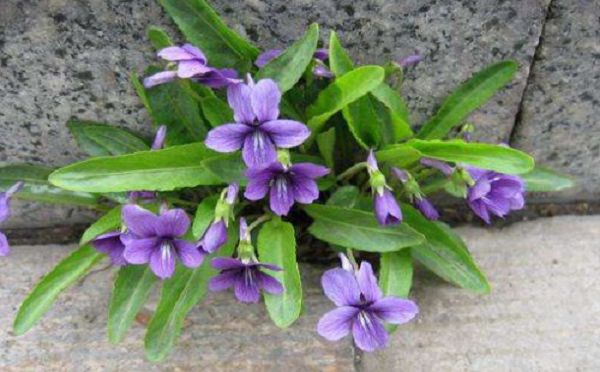Techniques of Flower cultivation on coping with Trace element deficiency in Flowers
Trace element deficiency in flowers
Flowers have a large demand for some elements, such as nitrogen, phosphorus, potassium and other elements, and relatively small requirements for other elements, such as magnesium, zinc, manganese, iron, copper, sulfur, boron, molybdenum and other trace elements. The trace elements needed by flowers have different functions. If some trace elements are deficient, it will cause the disorder of physiological function of flowers, lead to various symptoms of flowers, affect leaf color and flower posture, and even make plants weak and even die. The symptoms and corrective methods of lack of trace elements in flowers are introduced below for reference.
First, iron deficiency. The new mesophyll turns yellow, but the veins are still green and generally do not wither quickly. But over time, the edge of the leaf will gradually wither. Correction method: timely foliar spraying 0.3-0.5% ferrous sulfate solution, spray every 10-15 days, spray 2-3 times.
Second, zinc deficiency. Generally, the plant is short, the new leaves are green, the veins are green, the mesophyll is yellow, and the leaves are narrow. Correction method: foliar spraying with 0.05-0.1% zinc sulfate solution with 1 gram of zinc sulfate per plant mixed with an appropriate amount of mature fertilizer has a good effect.
Third, magnesium deficiency. With the aggravation of magnesium deficiency, the leaves showed yellow stripes, the leaves shrunk, the roots were few, the leaves were small, the flowers were small, the flowers were light, and the plant growth was suppressed. correction method: leaves were sprayed with 0.2-0.4% magnesium sulfate solution 2-3 times, or 2-3 grams of calcium magnesium phosphate fertilizer per plant.
Fourth, manganese deficiency. The leaves lost green and appeared variegated spots, but the veins of the leaves were still green and the color of the flowers was poor. Correction method: foliar spraying with 0.1-0.2% manganese sulfate solution, in order to prevent drug damage, 0.5% quicklime can be added to the mixture spray.
Fifth, sulfur deficiency. Generally speaking, the sulfur deficiency of flowers is that the young leaves are yellowish green first (unlike nitrogen deficiency, the old leaves usually turn yellow first), the plant is short, the stem is thin and weak, the growth is slow, and the plant development is inhibited. Correction method: 2-3 grams of potassium sulfate per plant.
Sixth, symptoms of calcium deficiency. The terminal bud is easy to be injured, the leaf tip and leaf edge die, the leaf tip often bends into a hook, the root system will also be necrotic, and when serious, the whole plant will die. Correction method: it can be irrigated with 0.2-0.4% lime solution for 2-3 times, each time 20-30 ml per plant.
Practice has proved that trace element deficiency is generally the result of long-term failure to change soil or long-term single application of nitrogen fertilizer. If you can use fertile potted soil and regularly change pots to add soil, pay attention to the application of organic fertilizer, general flowers will not lack trace elements.
Related
- What if the leaves of potted flowers turn yellow?
- Florescence Control of several Flowers
- Anti-freezing technology and post-freezing nursing technology of flowers
- What is the classification of flowers? What are the common methods of flower classification?
- Prevention and control of alkali and acid damage of flowers in courtyard
- Technology of Anti-freezing and restoring growth of Flower seedlings in greenhouse and greenhouse
- How does flower fertilization not hurt the root? Fertilization technology of flowers
- Key points of disinfection in flower greenhouse
- Several pesticides that are banned or used cautiously in flowers
- How to fertilize the flowers that watch the leaves?



